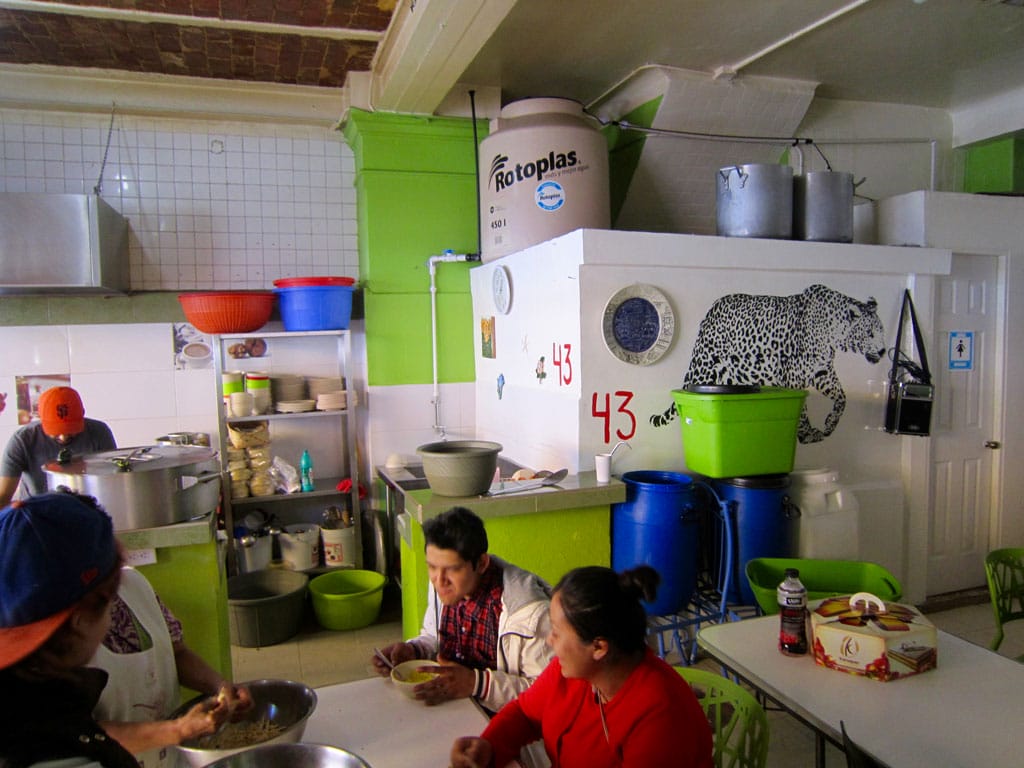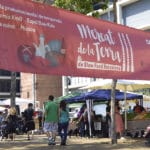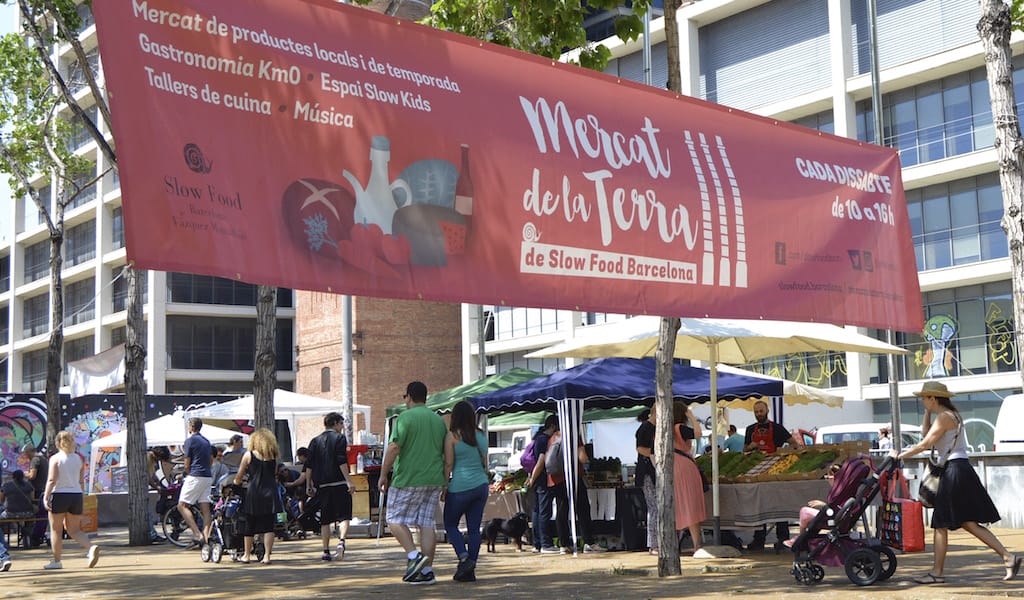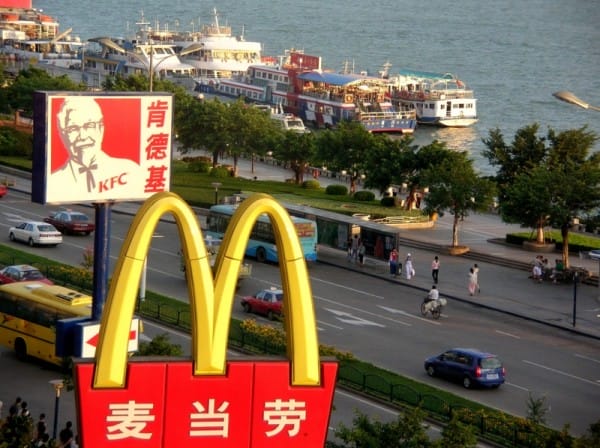Update: This spot is sadly no longer open.
We were sitting at the counter, trying out the goods, when an elderly man who has clearly had a tough life copped a squat at the next bench. Leaning on a crutch, with only one eye and a very dinged-up forehead, he patted our shoulder to offer us a cup and a pitcher of fresh, cool water. We chatted a bit. Telling us he’s a regular and praising the preparation of the veggies at El Comunitario, he flashed his toothless, but endearing, smile, “What do you think of how much people are paid here?”
It was a genuinely pleasant immersion into the social whirl of this community kitchen, located in one of the more troubled corners in the heart of Mexico City’s Centro. We began to pour water into our other neighbors’ cups and chatted with the cooks in the kitchen, enjoying some great, incredibly cheap grub.
It isn’t the first place we would send foreign travelers; maybe it’s the last refuge of a weary, cash-strapped, socially conscious wayfarer.
In 2010, “El Comunitario” – an adjectival noun for “community” – rolled up the track door led by Cristina Zaragoza Gomez with her brother Daniel Zaragoza, taking on the role as head cook and purchaser. Gomez applied to a program run by the city government’s social development department that listed properties available in the city, ones wishing to open community-based ideas that could receive food subsidies.
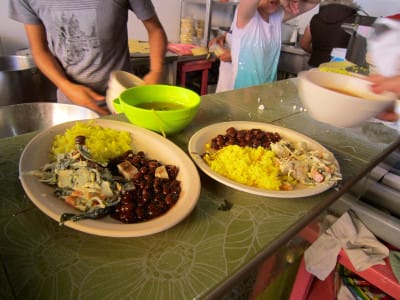 With the project’s approval, “El Comunitario” won beans, oil, tortillas and other basic ingredients, enabling them to offer a square meal – soup, rice, beans and a main course – for a meager 10 pesos (about US$0.50).
With the project’s approval, “El Comunitario” won beans, oil, tortillas and other basic ingredients, enabling them to offer a square meal – soup, rice, beans and a main course – for a meager 10 pesos (about US$0.50).
However, unlike the barebones surroundings that come to mind with a typical soup kitchen, El Comunitario is decorated with smart, fiery graphics on the walls and filled with young hopefuls looking to change the world.
The place has also taken great pains to commemorate the appalling disappearance of 43 students in the state of Guerrero in September 2014, which generated a firestorm of protests that continue to this day. Painted “43”s also dot the restaurant. There is a constant sense that both the incident and the following spectacular failings of the government to provide justice are never far away from the mind of the Mexican people.
And then there’s the food. Zaragoza buys the veggies at the massive La Merced market about 20 minutes’ walk from here. He doesn’t overcook them (think not-too-soft, hot-as-hell, bouncy broccoli), and the ladles are perfect for the portions needed to feed 250 people daily.
“It’s a different vision,” he says. “It’s not just food for the body, but food for the spirit, the soul.” Buying the food locally is “another way to strengthen ties within the neighborhood.”
El Comunitario is situated on a street named Puente de Peredo, tiny, narrow, barely named, running across Lopez and then Eje Central, just below Ayuntamiento. It’s an odd corner – Lopez street is known for its open-air chicken stores going back generations.
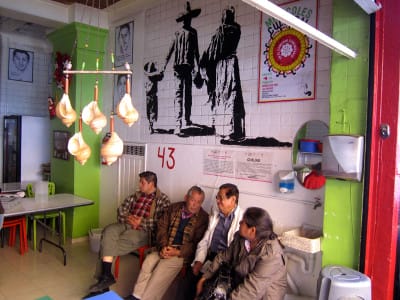 But six years running, it seems El Comunitario has found a home there. Maybe it comes down to helping the neighbors. On Wednesdays, after the food runs out, there is a film, coffee and debate. Upcoming projects include a rolling stage, useful for film and live theater.
But six years running, it seems El Comunitario has found a home there. Maybe it comes down to helping the neighbors. On Wednesdays, after the food runs out, there is a film, coffee and debate. Upcoming projects include a rolling stage, useful for film and live theater.
But for now there is lunch.
Alongside the line of mostly elderly roping around the block, there is an open, paved block, which the city had approved to create a basketball court and an urban soccer field, but it is filled with cars.
Frenaleros are guys who watch your cars in a coordinated, demand-based mafia, a mafia, some might say, of necessity, making their living parking cars there. It’s an old system and an effective one. These men make their living waving flannel, but they, according to Zaragoza, stand in the way of community building. He shakes his head.
Nevertheless, men and women line up for a meal.
Food well prepared, and at 10 pesos! In these times, the fact that there are people out there dedicating their lives to feed their neighbors – whoever they may be – is noble.
Published on March 14, 2016
Related stories
July 6, 2017
BarcelonaThe Slow Food movement may be all about slow living, but its spread around the world has been nothing short of speedy. What began as a protest against the opening of a McDonald’s in the Piazza di Spagna in Rome in 1986 has morphed into an international organization that safeguards some of the most authentic…
October 25, 2012
ShanghaiBreakfast in China traditionally consists of something brothy and stomach-filling, such as congee (a rice-based porridge), wonton soup or xiǎolóngbāo (soup dumplings). Also popular are savory fried foods like scallion oil pancakes – in Shanghai, lines of hungry customers waiting to get their morning pancake fix from places like A Da Cong You Bing can…
The tasca, an essential element of our Lisbon walks.
March 22, 2017
LisbonOne of Lisbon’s best views is just steps away from Largo da Graça in Saint Andre, one of the city’s seven hills. The famous overlook offers views of most of the city and even some of the Tejo river. Most days it’s filled with a mix of tourists making good use of their selfie sticks,…







































